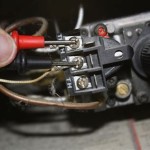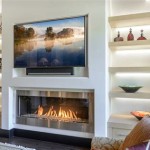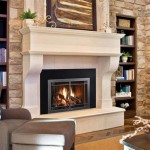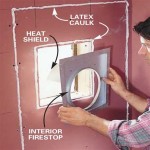Understanding Lava Rock for Gas Fireplaces: Selection, Use, and Maintenance
Lava rock serves as a popular and aesthetically pleasing medium in gas fireplaces, offering both visual appeal and functional benefits. Its porous nature, durability, and heat-retention properties make it a suitable alternative or addition to traditional gas logs. Understanding the different types of lava rock, their proper installation, and the necessary maintenance procedures is crucial for optimizing the fireplace's performance and ensuring safety.
The use of lava rock in gas fireplaces has increased in popularity due to its affordability and ease of installation. It offers a modern, minimalist look compared to the more traditional appearance of gas logs. Furthermore, its ability to radiate heat evenly contributes to a more comfortable and efficient heating experience. However, a thorough understanding of the characteristics of lava rock is required to ensure its safe and effective application.
The following sections will detail the crucial aspects of using lava rock in gas fireplaces, covering selection criteria, installation procedures, and essential maintenance guidelines. This comprehensive information will enable homeowners and professionals to make informed decisions regarding the use of lava rock, ensuring the longevity and performance of their gas fireplace.
Selecting the Right Type of Lava Rock
Lava rock is not a monolithic material; it comes in various forms, each possessing distinct characteristics that influence its suitability for use in a gas fireplace. The primary factors to consider are the size, color, and type of lava rock. These factors directly affect the fireplace's appearance, heat distribution, and longevity of the rock itself.
Size is a crucial consideration. Lava rock is typically available in small, medium, and large sizes. Smaller rocks tend to distribute the flame more evenly, creating a wider area of visual interest. However, they may also restrict airflow if packed too tightly. Larger rocks, on the other hand, create a more dramatic visual impact but may not distribute the flames as uniformly. Selecting a mix of sizes is often the best approach, allowing for optimal flame distribution and aesthetic appeal. Furthermore, the size should be compatible with the size of the burner; oversized rocks may smother the flame, while undersized rocks may not provide adequate coverage.
Color plays a significant role in the overall aesthetic of the fireplace. Lava rock is commonly available in shades of black, red, and brown. Black lava rock tends to create a modern and dramatic look, while red lava rock evokes a more rustic and natural feel. Brown lava rock offers a more neutral and subtle appearance. The choice of color should complement the surrounding décor and reflect the desired aesthetic. It is important to note that the color of lava rock may fade slightly over time due to prolonged exposure to heat and flame. To mitigate this, consider purchasing lava rock that has been treated with a heat-resistant coating.
The type of lava rock refers to its porosity and density. Highly porous lava rock tends to retain heat more effectively but may also be more prone to crumbling over time. Denser lava rock is more durable but may not retain heat as efficiently. Consider the trade-offs between heat retention and durability when selecting the type of lava rock. Generally, volcanic lava rock is preferred due to its balanced properties. Avoid using rocks collected from unknown sources, as they may contain moisture or other impurities that can cause them to explode or release harmful substances when heated. Purchasing lava rock specifically designed for gas fireplaces ensures safety and optimal performance.
Proper Installation of Lava Rock in a Gas Fireplace
The correct installation of lava rock is paramount for ensuring the safe and efficient operation of a gas fireplace. Improper installation can lead to issues such as poor flame distribution, gas leaks, and even explosions. The installation process involves carefully layering the lava rock around the burner, ensuring proper airflow and avoiding any obstruction of the gas ports.
Before commencing the installation, ensure that the gas supply to the fireplace is completely shut off. This is a critical safety precaution. Consult the fireplace manufacturer's instructions for specific guidance on the proper arrangement of lava rock. Generally, the lava rock should be layered around the burner, leaving adequate space for the flames to emerge. Avoid stacking the rock too densely, as this can restrict airflow and lead to incomplete combustion. Ensure that the gas ports on the burner are not blocked by the lava rock. Blocking these ports can lead to uneven flame distribution and potentially dangerous gas leaks.
Begin by placing a layer of larger rocks around the burner base to create a stable foundation. Then, add smaller rocks to fill in the gaps and create a more uniform surface. Carefully distribute the lava rock to ensure that the flames are visible from all angles. Avoid placing lava rock directly on top of the burner, as this can smother the flame and create a fire hazard. If using a mixture of different sizes of lava rock, distribute them evenly throughout the fireplace for a more natural and appealing look.
After the lava rock has been installed, carefully inspect the arrangement to ensure that there are no obstructions and that the gas ports are clear. Turn on the gas supply and ignite the fireplace to test the flame pattern. Observe the flames for any signs of uneven distribution, flickering, or unusual behavior. If any issues are detected, adjust the lava rock arrangement accordingly until the flames are burning smoothly and evenly. It's also advisable to perform a leak test with a soapy water solution around the gas connections after the installation to ensure no gas is escaping. If any leaks are detected, immediately shut off the gas supply and consult a qualified technician.
Maintaining and Caring for Lava Rock in Gas Fireplaces
Regular maintenance is essential for preserving the appearance and performance of lava rock in a gas fireplace. Over time, soot and other debris can accumulate on the surface of the rock, diminishing its visual appeal and potentially affecting its ability to radiate heat. Periodic cleaning and inspection are necessary to keep the lava rock in optimal condition.
The frequency of cleaning will depend on the frequency of fireplace use. As a general guideline, it is recommended to clean the lava rock at least once a year, or more frequently if the fireplace is used heavily. Before cleaning, ensure that the fireplace is completely cool and the gas supply is shut off. Remove the lava rock from the fireplace and gently brush off any loose debris with a soft brush. For more stubborn stains or soot buildup, use a mild detergent and warm water to scrub the rock. Avoid using harsh chemicals or abrasive cleaners, as these can damage the lava rock.
Rinse the lava rock thoroughly with clean water to remove any traces of detergent. Allow the lava rock to dry completely before placing it back in the fireplace. Moisture trapped within the rock can cause it to crack or explode when heated. After cleaning and drying, carefully inspect the lava rock for any signs of damage, such as cracks or crumbling. Replace any damaged rocks to prevent potential hazards. Periodically check the arrangement of the lava rock to ensure that it is not obstructing the gas ports or restricting airflow. Rearrange the rock as needed to maintain optimal flame distribution.
In addition to cleaning, it is important to periodically inspect the gas fireplace itself for any signs of wear and tear. Check the gas connections for leaks, and inspect the burner for any damage or corrosion. Schedule regular maintenance with a qualified technician to ensure that the gas fireplace is functioning safely and efficiently. Proper maintenance of both the lava rock and the gas fireplace will extend the lifespan of the system and ensure years of reliable performance. Addressing minor issues promptly can prevent them from escalating into more serious and costly problems. Replace the lava rocks entirely every few years as they will eventually degrade and lose their aesthetic appeal and heat-retention properties.

Lava Rock Vs Fire Glass Blog Fireplace And Chimney Authority

Manchester Oak Gas Logs Cyprus Air Fireplaces Va Md Dc

Allen Roth Vented Or Vent Free Gas Log Lava Rock In The Fireplace Accessories Department At Com

Fire Pit Media Lava Rock Glass Woodlanddirect Com

Lava Rock 10 Things To Know About Fire Pit Rocks Buyer S Guide 2024

Lava Rock Vs Fire Glass Blog Fireplace And Chimney Authority

Lava Rock 10 Things To Know About Fire Pit Rocks Buyer S Guide 2024

Pleasant Hearth Vented Gas Log Vermiculite In The Fireplace Accessories Department At Com

Grand Canyon Vented Cannon Ball Set Woodland Direct Fireplace Gas Logs Log Sets

American Gas Log 5 Lbs Bag Of Lava Rocks For Fireplace Hd The Home Depot
Related Posts








